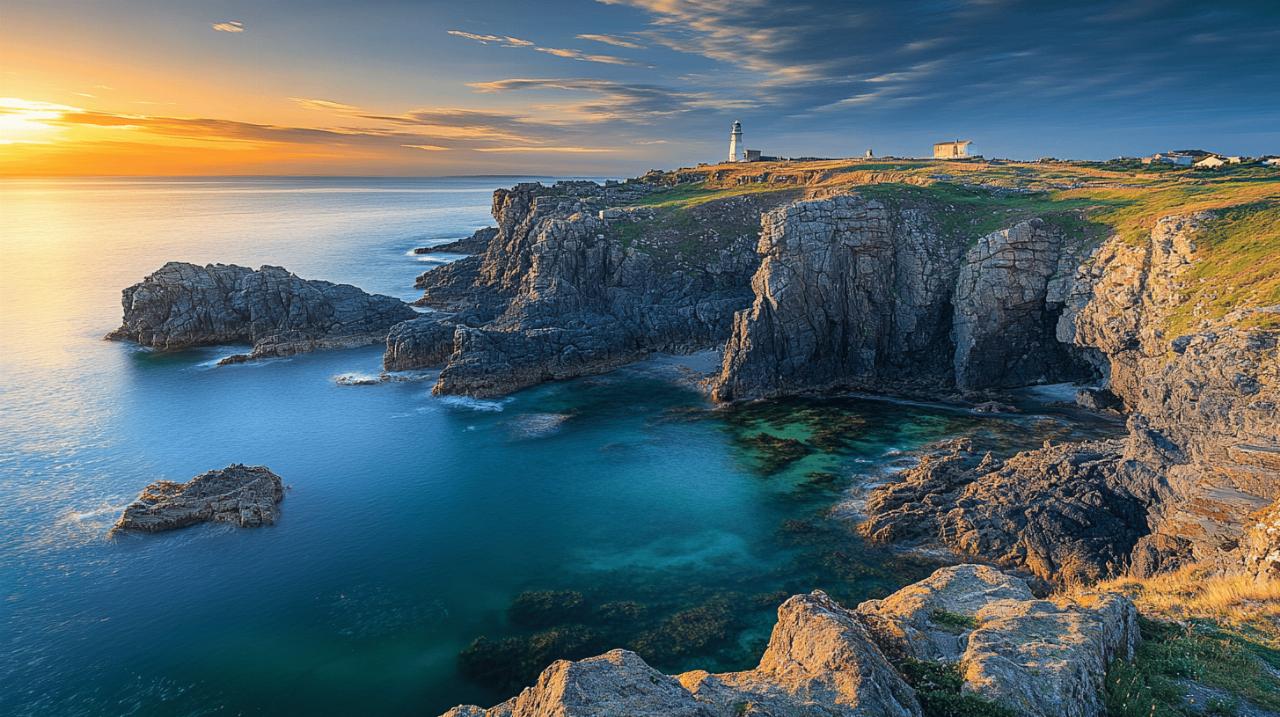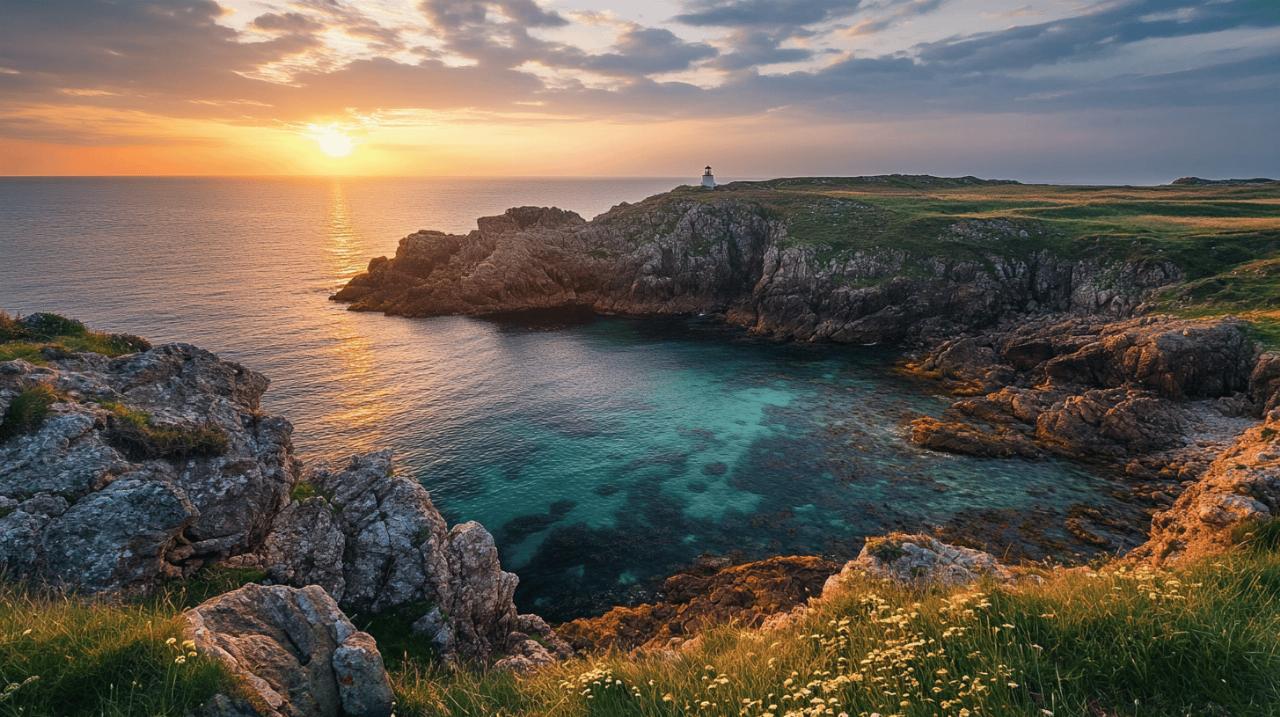Wings Over Brittany: Exploration de la Pointe de Trevignon, The Birdwatching Gem of Finistère’s Historic Coastline
Nestled on the captivating coastline of Finistère, Pointe de Trévignon emerges as a hidden treasure for nature enthusiasts and history buffs alike. This remarkable promontory in Brittany offers visitors an extraordinary blend of stunning landscapes, rich biodiversity, and fascinating maritime heritage. As part of the broader appeal of the beautiful Trégunc area, this coastal gem invites travellers to discover its unique character and natural splendour, making it an essential destination for those exploring France's northwestern region.
A natural haven for avian enthusiasts
The rugged coastline of Pointe de Trévignon has established itself as one of Brittany's premier destinations for bird-watching, rivalling even the celebrated sites of Ouessant and Cap Sizun. The promontory serves as a crucial stopover on major migratory routes, creating a paradise for ornithologists and casual nature lovers alike. The area's ecological significance is magnified by its position along the GR34 coastal path, offering unparalleled access to observe these magnificent creatures in their natural habitat.
Seasonal migration spectacles
Each season transforms Pointe de Trévignon into a different avian theatre. Spring welcomes breeding pairs establishing territories among the coastal vegetation, while autumn brings the most dramatic displays as thousands of migratory birds use the headland as a crucial navigation point. Similar to the spectacles observed at Baie of Saint-Brieuc during winter months, Trévignon offers visitors the chance to witness remarkable murmurations and feeding frenzies as birds prepare for their onward journeys. The changing cast of characters throughout the year ensures that no two visits to this travel website favourite offer quite the same experience.
Rare species spotting opportunities
Beyond the seasonal visitors, Pointe de Trévignon boasts resident populations of several rare and protected bird species. Keen observers might spot peregrine falcons hunting along the cliff faces or red-billed choughs foraging among the coastal grasslands. The nearby conservation area, spanning an impressive 300 hectares across 6 kilometres, provides essential protected habitat for these special residents. The unique environmental conditions created by the meeting of land and sea make this location comparable to the celebrated Sept-Îles archipelago in terms of biodiversity, though with its own distinctive ecological character.
The Rugged Coastal Landscape of Pointe de Trévignon
The dramatic scenery of Pointe de Trévignon represents some of the finest coastal landscapes in all of Brittany. The headland juts defiantly into the Atlantic, creating a stunning panorama where the forces of nature have sculpted a terrain of remarkable beauty and diversity. This exceptional setting forms part of Trégunc's impressive 23 kilometres of coastline, which also features 15 pristine white sandy beaches with crystal-clear waters that draw visitors seeking both recreation and tranquillity.
Geological features that shape the habitat
The geological foundation of Pointe de Trévignon tells a story millions of years in the making. Granite formations, similar to those found in the nearby Kergunus wood with its curious animal-shaped rocks, create microhabitats that support specialised plant and animal communities. These ancient stones, weathered by countless Atlantic storms, provide nesting crevices for seabirds and shelter for numerous invertebrate species. The interaction between these solid foundations and the ever-changing sea has created a landscape of remarkable resilience and beauty that continues to evolve with each passing tide.
Flora diversity along the coastal paths
The plant communities of Pointe de Trévignon demonstrate remarkable adaptation to the challenging coastal conditions. Salt-tolerant species thrive along the spray zone, giving way to hardy coastal grasslands and scattered patches of wind-pruned shrubs further inland. The nearby dune systems add another dimension to this botanical tapestry, hosting specialised plants that have evolved to thrive in the shifting sands. Walking the GR34 coastal path through this area reveals a constantly changing panorama of plant life, from delicate spring flowers to the golden hues of autumn grasses, making it a favourite destination for visitors seeking eco-friendly tourism experiences in France.
Maritime heritage and historical significance
 Beyond its natural wonders, Pointe de Trévignon stands as a living museum of human interaction with the sea. The area's maritime heritage runs deep, with generations of local communities having drawn their livelihoods and shaped their cultural identities through their relationship with the ocean. Today, visitors can experience this heritage through the working harbour, where fishing boats still bring in their daily catch, and through the architectural elements that speak to centuries of coastal life in Brittany.
Beyond its natural wonders, Pointe de Trévignon stands as a living museum of human interaction with the sea. The area's maritime heritage runs deep, with generations of local communities having drawn their livelihoods and shaped their cultural identities through their relationship with the ocean. Today, visitors can experience this heritage through the working harbour, where fishing boats still bring in their daily catch, and through the architectural elements that speak to centuries of coastal life in Brittany.
Ancient fishing traditions of finistère
The fishing harbour at Pointe de Trévignon continues traditions that stretch back centuries, offering visitors a glimpse into authentic maritime culture. Local fishermen still practise methods passed down through generations, bringing their catch to the small fish market where visitors can purchase the freshest seafood imaginable. This direct connection to the sea forms an integral part of the local identity and economy, similar to other coastal communities throughout Brittany. The opportunity to savour locally caught lobster while overlooking the very waters from which it was harvested represents one of the most authentic cultural experiences available to travellers exploring this remarkable region.
World war ii remnants along the coastline
The strategic importance of Brittany's coastline left Pointe de Trévignon with visible reminders of its role during the Second World War. Concrete bunkers and gun emplacements stand as silent sentinels along certain sections of the headland, telling the story of occupation and eventual liberation. These structures, now weathered by decades of exposure to the elements, provide a sobering counterpoint to the natural beauty that surrounds them. They serve as important heritage sites, preserving the memory of this pivotal period in European history while offering educational value to visitors interested in the region's past.
Practical Guide to Exploring Pointe de Trévignon
Visitors to Pointe de Trévignon will find a wealth of options for experiencing this special place, regardless of their interests or physical abilities. The area welcomes travellers year-round, though each season offers its own distinct character and attractions. From Cparici.com and other travel websites, visitors can arrange accommodation ranging from charming holiday rentals to unique stays in the nearby area, with options to suit every budget and preference, from approximately €39 to €455 per night depending on the season and amenities.
Best viewing points and photography spots
For those seeking to capture the essence of Pointe de Trévignon, several vantage points offer exceptional views. The lighthouse area provides sweeping panoramas of the coastline and out to sea, particularly magical during sunset when the light transforms the landscape into a photographer's dream. The harbour offers more intimate scenes of maritime life, with colourful fishing boats contrasting against the blue waters. For wildlife photography, the conservation area provides opportunities to capture birds in flight against dramatic coastal backdrops. These locations represent just a few of the countless frames waiting to be discovered by visitors with a keen eye for beauty.
Conservation efforts and visitor etiquette
The ecological significance of Pointe de Trévignon has led to important conservation initiatives aimed at preserving its natural value for future generations. Visitors play a crucial role in these efforts by practising responsible tourism. This includes staying on marked paths to prevent erosion and habitat damage, observing wildlife from appropriate distances, and taking all litter home. Local conservation organisations occasionally offer guided walks that provide deeper insights into the area's ecology while promoting its protection. By respecting these simple guidelines, visitors contribute to ensuring that this remarkable destination remains a pristine example of Brittany's coastal heritage for years to come.
